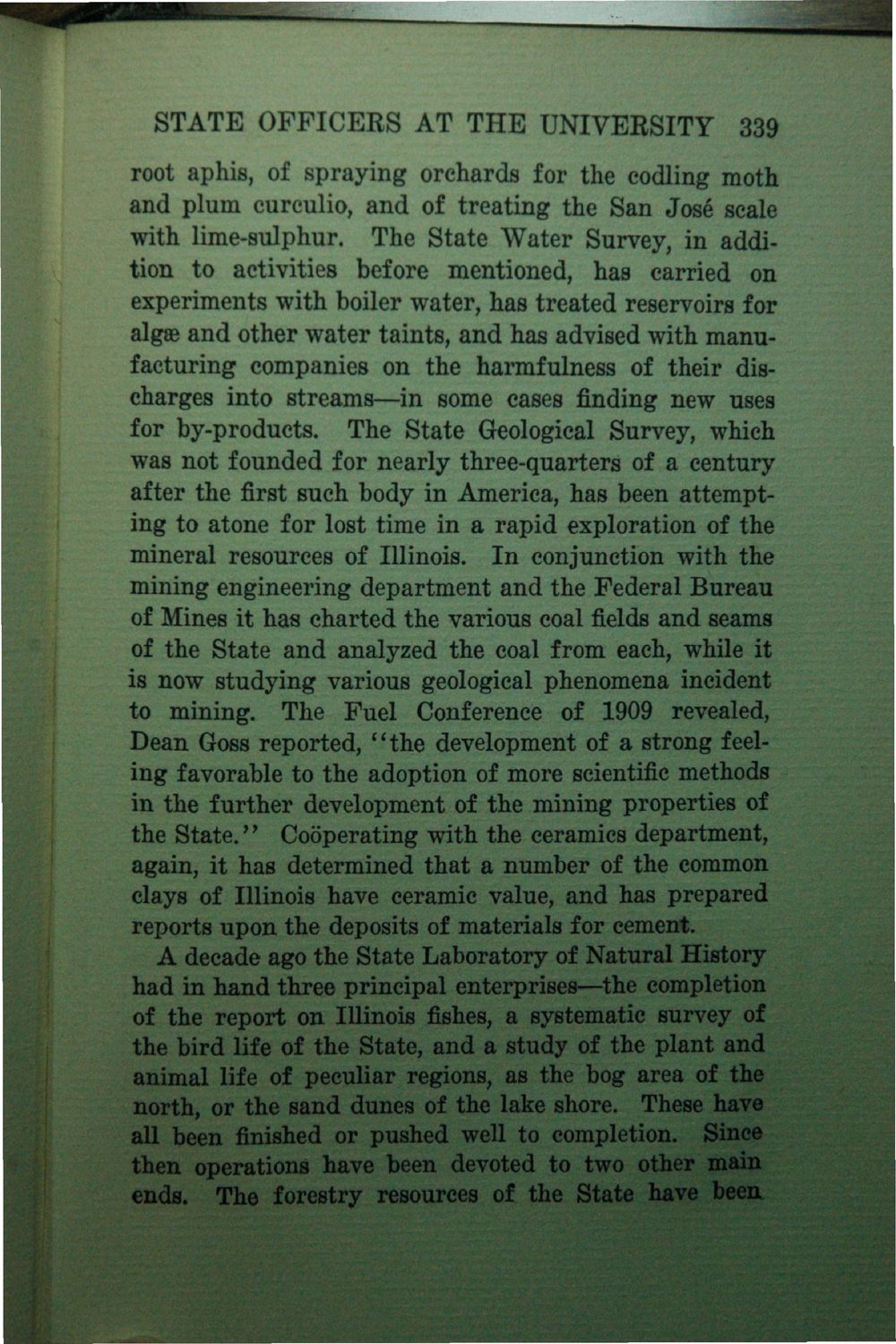| |
| |
Caption: Book - History of the University (Nevins)
This is a reduced-resolution page image for fast online browsing.

EXTRACTED TEXT FROM PAGE:
STATE OFFICERS AT THE UNIVERSITY 339 root aphis, of spraying orchards for the codling moth and plum cureulio, and of treating the San Jose scale with lime-sulphur. The State Water Survey, in addition to activities before mentioned, has carried on experiments with boiler water, has treated reservoirs for algae and other water taints, and has advised with manufacturing companies on the harmfulness of their discharges into streams—in some cases finding new uses for by-products. The State Geological Survey, which was not founded for nearly three-quarters of a century after the first such body in America, has been attempting to atone for lost time in a rapid exploration of the mineral resources of Illinois. In conjunction with the mining engineering department and the Federal Bureau of Mines it has charted the various coal fields and seams of the State and analyzed the coal from each, while it is now studying various geological phenomena incident to mining. The Fuel Conference of 1909 revealed, Dean Goss reported, "the development of a strong feeling favorable to the adoption of more scientific methods in the further development of the mining properties of the State." Cooperating with the ceramics department, again, it has determined that a number of the common clays of Illinois have ceramic value, and has prepared reports upon the deposits of materials for cement. A decade ago the State Laboratory of Natural History had in hand three principal enterprises—the completion of the report on Illinois fishes, a systematic survey of the bird life of the State, and a study of the plant and animal life of peculiar regions, as the bog area of the north, or the sand dunes of the lake shore. These have all been finished or pushed well to completion. Since then operations have been devoted to two other main ends. The forestry resources of the State have been
| |